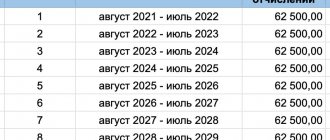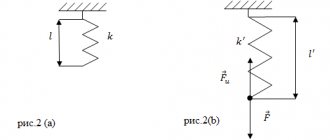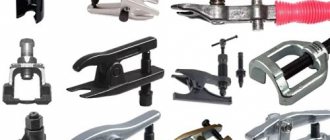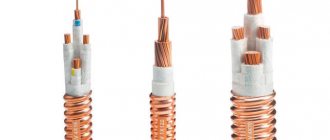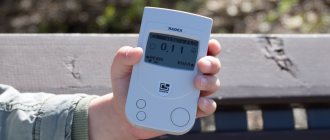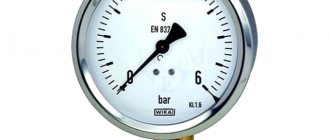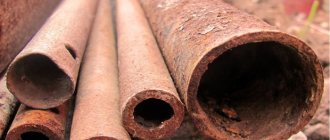The depreciation rate of fixed assets is an analytical indicator used when making management decisions about the reconstruction, modernization or replacement of fixed assets.
The depreciation rate of fixed assets is calculated based on financial reporting data. Usually this indicator is of interest to the owners and heads of departments of the enterprise, but sometimes third parties are also interested in it: creditors, counterparties, investors. The condition of fixed assets is one of the key criteria for assessing the profitability of an enterprise.
Today we will talk about how to calculate the depreciation rate of fixed assets and how to apply the results obtained in the financial analysis of the company's assets.
Definition
Fixed assets include expensive equipment, real estate, vehicles, machinery and other assets, the initial price of which is more than 100,000 rubles.
Any fixed asset is subject to wear and tear, regardless of its use in production and economic activities. Depreciation is accrued in accordance with the object’s belonging to a depreciation group according to the classification approved by government decree. The belonging of property to depreciation groups depends on the useful life of the object, which must be more than 12 months. Inventory and other property with a service life of less than a year are not classified as fixed assets and are written off as expenses in the reporting period in which they were actually used.
The concept of depreciation is not closely related to actual use. Depreciation is a partial transfer of property value to production costs. The degree of activity in the operation of a particular piece of equipment or machinery does not affect the amount of depreciation, and, consequently, the wear rate.
To determine the degree of depreciation of fixed assets, a coefficient is calculated that shows how many percent the property has lost in value. Let me immediately note that this has nothing to do with the market value of the property.
Thus, a building purchased for 1 million rubles, with accrued depreciation of 50% 10 years after its acquisition, can cost 3 million rubles if real estate prices rise. The same applies to cars, machine tools and other equipment.
Reducing the initial cost of an object is a process that depends on the following factors:
- belonging of the property to the depreciation group;
- depreciation method;
- carrying out repairs and modernization.
What is an aggressive environment?
The nature of destruction of building materials can be very diverse - chemical, physical, electrochemical, physicochemical. There is a special SNiP 2.03.11-85, which provides a classification of aggressive environments with the degree of their impact. They can be gaseous, liquid and solid.
The first include compounds of sulfur, carbon, carbon dioxide and sulfur dioxide gases, etc. Their aggressiveness is characterized by indicators of type, concentration, temperature, humidity and solubility in the aquatic environment.
A liquid aggressive medium exists in the form of a solution of alkalis, acids and salts. And in addition - petroleum, oils and solvents. The main indicators here are the concentration of the agent, temperature, pressure force and speed of movement. In a liquid aggressive environment, the corrosion process is especially intense.
Solid aggressive media include dust, various soils, etc. Indicators of their aggressiveness include dispersion, solubility in water, hygroscopicity and humidity. The role of active moisture in solid media is especially dangerous to underestimate.
The climatic and geological conditions in which the construction process is carried out in our country sometimes make it difficult to find optimal solutions that can take into account all types of impacts on the physical deterioration of objects, their durability, efficiency and other indicators. That is why it is important for operational services personnel to take into account possible specific impacts on the structures entrusted to them.
Conventional wear coefficient
The depreciation rate of fixed assets characterizes only the change in the book value of objects. Actual wear is determined only by checking the technical condition, which is carried out by experts. Why do we need the indicator we are considering?
As has already been mentioned several times, the book value of assets is one of the key indicators of the financial condition of an enterprise. If the wear rate is too high, then there is a chance that the company is not upgrading or updating the equipment. It is known that computer technology quickly becomes obsolete. The same applies to machines and other equipment used in the production process. If a company does not invest money in fixed assets, it means that the owners are either not interested in developing the business, or the company is experiencing a shortage of funds.
Not all interested parties can come to the company with an audit to assess how efficient the equipment is. Therefore, it is important that the data reflected in the reporting does not raise questions among potential investors and partners.
Third parties, as a rule, have only reporting data, where the cost of all objects is reflected in one figure. In order to obtain more objective results, the coefficient should be calculated by groups of assets or separately for each object.
What is an aggressive environment
The concept of an aggressive environment includes an environment, as a result of which the properties and structure of materials can change. The result is a constant decrease in strength and failure of the structure. It's called corrosion. Those substances and phenomena that cause corrosion and destruction or contribute to their occurrence are called active factors (stimulants). On the contrary, those of them, under the influence of which the process of corrosion and destruction can be slowed down, are classified as passivators or corrosion inhibitors.
The same conditions cannot be considered uniquely aggressive or passive. Their character is not universal, and each of them, under certain conditions, can act as a useful factor, and vice versa.
For example, the presence of warm, humid air is a strong aggressive factor towards steel. At the same time, for concrete it serves as a positive circumstance that increases the strength of the latter.
Why is it defined?
In addition to the above, the indicator is used for analytical purposes.
We know that the ratio of asset value to capital significantly affects the degree of competitiveness and investment attractiveness. Thus, the return on assets (ROA) ratio depends on the book value of fixed assets. The coefficients of capital productivity, capital-labor ratio and capital intensity, which you are also familiar with, are also calculated based on the value of assets.
If the book value of an asset decreases, this is a sign that the company is not doing well. Therefore, owners are interested in ensuring that the depreciation rate of fixed assets does not exceed the established values. We will talk about the indicator standards later.
Thus, the coefficient is calculated in order to correctly reflect the data in the financial statements, as well as to determine the potential of investments in fixed assets. Based on the calculations, management and owners make decisions on how much money the company needs to renew its assets and from what sources these funds will be allocated.
As a rule, the indicator is calculated for enterprises in the manufacturing sector, but the price of assets is also important for large trading companies, cargo carriers, and the service sector where equipment is used.
For example, a network of car service centers will lose competitiveness if it uses old lifts. In general, outdated equipment that has not been repaired for a long time poses a threat to both the company’s income and the safety of employees and consumers of the products. The same goes for buildings and vehicles.
Therefore, for any field of activity, the calculation of the wear rate is relevant.
Gas abrasive
This subtype of abrasive wear differs from it in that solid abrasive particles move in the gas flow. The surface material crumbles, is cut off, and is deformed. Found in equipment such as:
- pneumatic lines;
- fan and pump blades for pumping contaminated gases;
- domain installation nodes;
- components of solid fuel turbojet engines.
Often, gas abrasive effects are combined with the presence of high temperatures and plasma flows.
Beginning of the form
End of form
Formula for calculating the depreciation rate of fixed assets
The classic formula is as follows:
\[ Kizn.=\sum depreciation/PS*100\%, where: \]
\( \sum depreciation. \). – accrued depreciation;
\( PS \) – initial cost.
Calculation of coefficient based on depreciation
So, suppose the machine was purchased for 100 thousand rubles. At the moment, the amount of accrued depreciation is 45 thousand rubles. Let's calculate the wear rate of fixed assets using the formula given above:
Interpretation
There are no standard wear coefficient values. However, a manufacturing enterprise must have its own depreciation rate, which is reflected in internal documents, for example, in an order on accounting policies.
Most companies accept a figure below 50% as the norm. When the total depreciation rate of fixed assets for the organization as a whole becomes 50% or more, it is recommended to make calculations for groups of assets and for individual objects. For fixed assets worn out by 70% or more, a decision is made on reconstruction, modernization or replacement.
Wear coefficient standards
If a certain standard value of an indicator is established for a specific industry, and a different value is recorded in the company’s internal document, then a comparative analysis with competitors, as well as an assessment of investment interest, may give an unreliable picture.
In this regard, it is recommended to adhere to practice-tested values and calculate the depreciation rate of fixed assets by production divisions and asset units.
Abrasive
It consists in the destruction of the surface layer of the material during contact with harder particles of other materials. Characteristic for mechanisms operating in dusty conditions:
- mining equipment;
- transport, road construction mechanisms;
- Agreecultural machines. Agreecultural equipment;
- construction and production of building materials.
You can counteract it by using special hardened coatings for rubbing pairs, as well as by promptly changing the lubricant.
Wear rate analysis
Here are several criteria that should be followed when assessing and analyzing a wear indicator:
- an increase in the coefficient indicates that the time for modernization or replacement of fixed assets is approaching;
- a value of 50% is considered a “turning point”: after overcoming this mark, it is recommended to make management decisions on the renewal of fixed assets;
- It is recommended to calculate the depreciation coefficient simultaneously with the serviceability coefficient of fixed assets.
Calculation examples
We will calculate the wear and service rates of fixed assets for the enterprise as a whole, by divisions and individual facilities, and analyze the results obtained:
| Division/name of object | Original price | Remainder price | Depreciation | Wear coefficient, % | Usability factor |
| Production workshop No. 1 | 14 444 654,00 | 10 343 952,00 | 4 100 702,00 | 28,39 | 0,72 |
| Four post lift | 1 409 250,00 | 950 310,00 | 458 940,00 | 32,57 | 0,67 |
| Automatic balancing machine | 9 508 848,00 | 5 600 950,00 | 3 907 898,00 | 41,10 | 0,59 |
| Hydraulic machine | 2 530 735,00 | 1 090 222,00 | 1 440 513,00 | 56,92 | 0,43 |
| Refrigeration unit | 995 821,00 | 453 210,00 | 542 611,00 | 54,49 | 0,46 |
| Production workshop No. 2 | 6 931 416,00 | 4 186 058,00 | 2 745 358,00 | 39,61 | 0,60 |
| Electric winch | 2 880 395,00 | 1 435 640,00 | 1 444 755,00 | 50,16 | 0,50 |
| Metal cutting machine | 3 385 641,00 | 2 190 360,00 | 1 195 281,00 | 35,30 | 0,65 |
| Electric stacker | 665 380,00 | 350 650,00 | 314 730,00 | 47,30 | 0,53 |
| Administrative and economic department | 4 023 580,00 | 3 030 490,00 | 993 090,00 | 24,68 | 0,75 |
| Administrative building | 3 690 000,00 | 2 840 000,00 | 850 000,00 | 23,04 | 0,77 |
| Computer | 125 000,00 | 65 000,00 | 60 000,00 | 48,00 | 0,52 |
| Copy machine | 97 320,00 | 40 100,00 | 57 220,00 | 58,80 | 0,41 |
| Air conditioner | 111 260,00 | 85 390,00 | 25 870,00 | 23,25 | 0,77 |
| Total | 25 399 650,00 | 17 560 500,00 | 7 839 150,00 | 30,86 | 0,69 |
So, the overall value for the organization as a whole is far from critical - approximately 31%. Please note that the depreciation and serviceability coefficients of fixed assets add up to 100%:
\[ 31 + 69=100. \]
Nevertheless, it is advisable to modernize some facilities. This applies to the hydraulic machine, refrigeration unit and electric winch.
As for the copier and other office equipment, the issue of replacement is decided on the basis of the equipment’s performance. If the copier is constantly being repaired, the quality of the copies is low, or the equipment is malfunctioning, you may need to think about replacing it.
